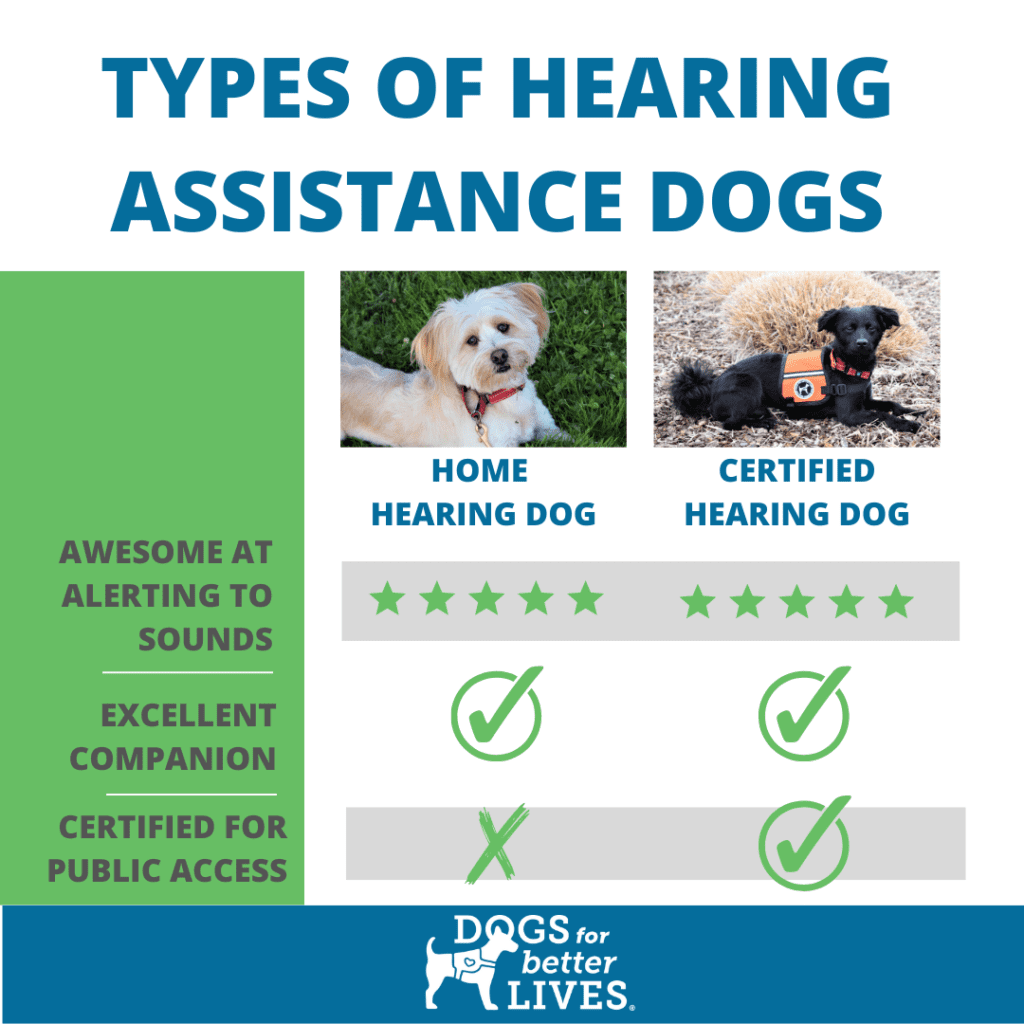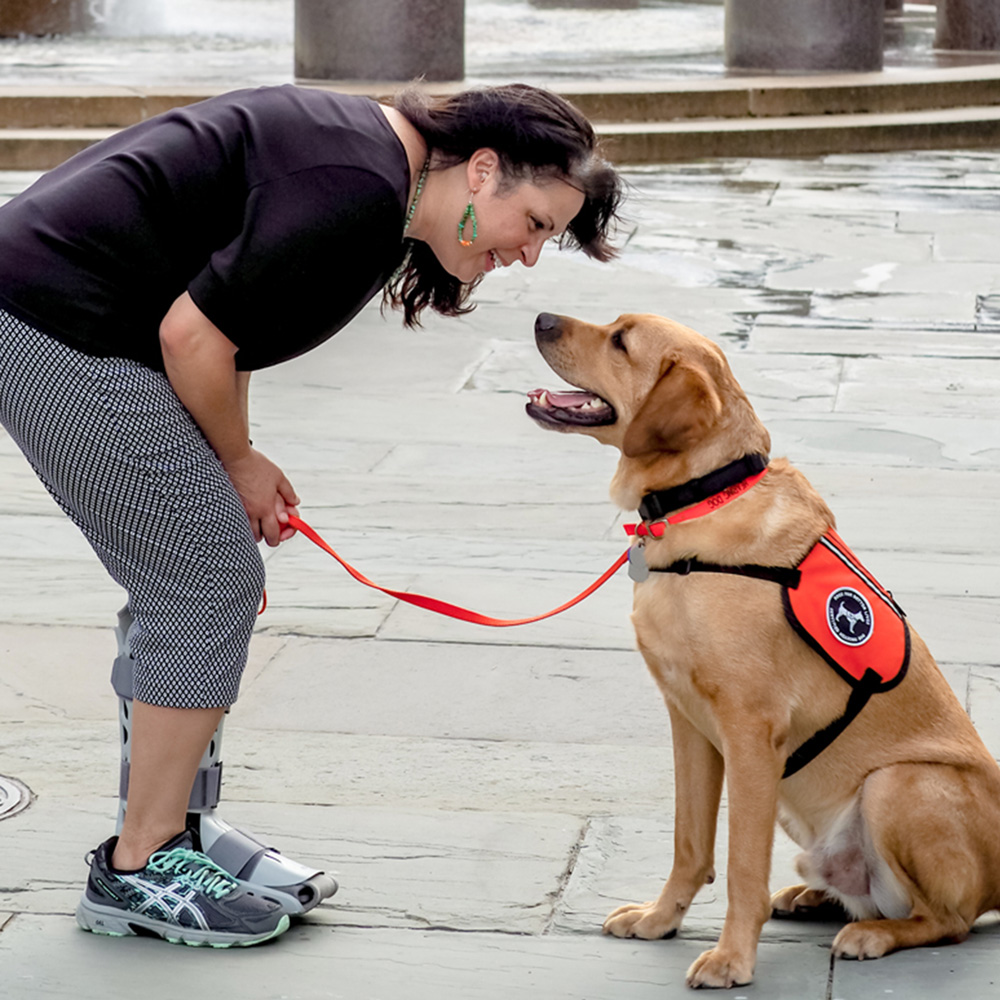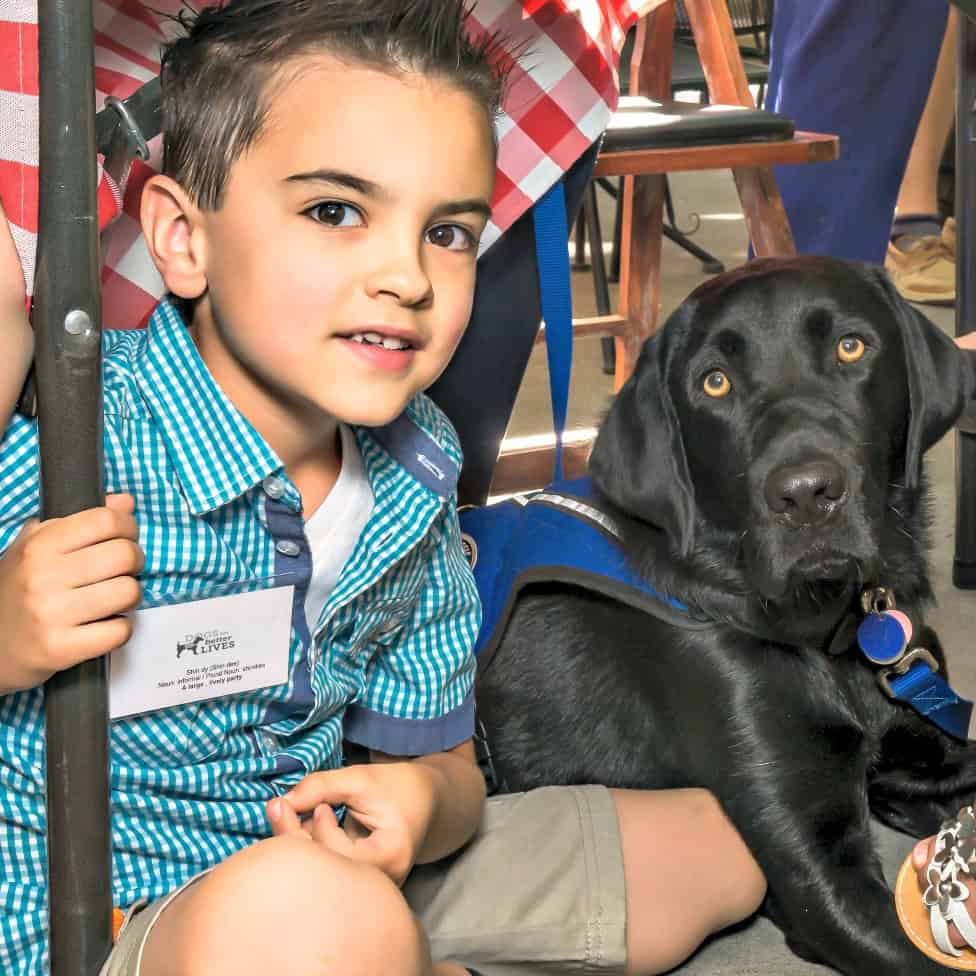Dogs for Better Lives has trained and placed Hearing Assistance Dogs for over 45 years, and one question we’re often asked is the difference between a Home Hearing Dog and a Certified Hearing Dog, and how do we choose which type goes to certain client.
How They’re Alike
First, let’s talk about how they’re similar. Both types of Hearing Assistance Dogs go through hundreds of hours of training – both obedience and extensive sound work. They are selected early on in their training for their exceptional ability to alert a person to sounds. Through sound awareness and companionship, both types of Hearing Assistance Dogs provide clients with more freedom and security.
Public Access
 The main difference between a Home Hearing Dog and a Certified Hearing Dog is whether the dog is certified for public access. If a dog is certified for public access, they are placed as a Certified Hearing Dog. In our last fiscal year, just over half of our new Hearing Assistance Dogs were placed as Certified Hearing Dogs.
The main difference between a Home Hearing Dog and a Certified Hearing Dog is whether the dog is certified for public access. If a dog is certified for public access, they are placed as a Certified Hearing Dog. In our last fiscal year, just over half of our new Hearing Assistance Dogs were placed as Certified Hearing Dogs.
Only dogs that can stay focused on their client, ignore other dogs and are comfortable around a wide range of people and environments become Certified Hearing Dogs. This is a high bar, because we want dogs who work in public settings to have the best possible behavior.
Home Hearing Dogs are still great dogs who are great at alerting to sounds, but they might not enjoy new places or may have significant dog or scent distraction. Or they can be too social – or even too shy – with strangers. Even though these dogs have not been certified for public access, they provide their client with life-changing companionship and support around the home.
Matching the Right Dog to the Client
How do we choose whether a client receives a Home Hearing Dog or a Certified Hearing Dog? Some clients have sound work needs at their workplace or travel frequently, so we work to match them with a Certified Hearing Dog. Other clients need a trained dog to alert them to sounds in their home, but don’t require a dog to come with them outside of the home very often. These clients are usually matched with a Home Hearing Dog.
One thing to note, is that a dog may transition from one type of Hearing Assistance Dog to another. DBL has a lifetime commitment to our dogs, and our trainers are always willing to reassess a team if a client’s needs change.
There are a few cases where this might happen. Sometimes as a Home Hearing Dog matures and/or bonds with its client, they may become more confident and focused, and they might be able to transition into a Certified Hearing Dog. If a Home Hearing Dog can transition to public access, we send a trainer to give them proper training. Alternatively, all Certified Hearing Dogs eventually become Home Hearing Dogs as they age – for the safety of both the dog and the client.
Would you or someone you know benefit from a Hearing Assistance Dog? Learn more about our dogs and submit an application.












